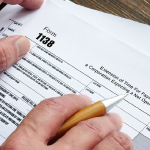A net operating loss (NOL) typically happens in a business or farm situation when your expenses are greater than your income, which means you’re left with a negative number when you finish your tax return. If this happens to you, you have two options for how to handle the negative amount.
You can automatically carryback the loss five years (IRS), or two years (state), and use the loss to offset income from one or more of the preceding years. This strategy should result in a refund of the tax you paid in the carryback years.
You can waive the carryback option and only carryforward the loss to future years by including a special irrevocable election with the tax return reporting the loss.
WHY WOULD YOU CHOOSE TO ONLY CARRYFORWARD A LOSS?
This option is a great choice if you’re anticipating much higher income in the future years than you had in the previous five years (in other words, you’ll be in a higher tax bracket).
HOW DOES A CARRYFORWARD WORK?
NOL carryforwards are easy. There are no special forms to mail in, and the running tally is carried forward to each future year until the loss is fully used up, which must happen within 20 years.
HOW IS THE NOL CARRIED BACK?
To carryback a loss, you need to prepare a Form 1045 (Schedule B) or an amended tax return. This can’t be e-filed — it has to be sent in with a paper copy of the tax return, along with any K-1s showing income or losses for the year in question.
For example, I just completed a 2020 tax return for a client who had an $80,000 NOL from his Schedule C and partnership. In 2019, he had $148,000 of taxable income because he withdrew $146,000 from his IRA to invest in his partnership. After the loss is carried back to 2019, he will qualify for a $21,000 IRS refund and a $6,600 state refund. NOLs can be complicated to calculate, so if you have any questions about how to do it, please reach out to me, and I can walk you, your friend, or your family member through the process.

